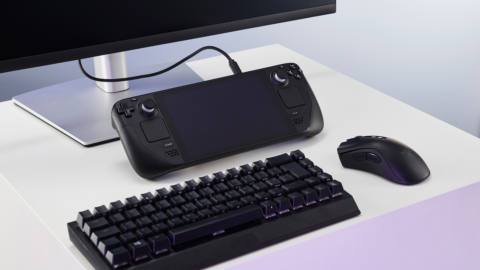Asus's ROG Ally handheld gaming PC only arrived in May last year. But Asus is already plotting a follow up for later in 2024.
In an interview with Techlusive, Asus India's VP of consumer and gaming PCs, Arnold Su, briefly outlined Asus's plans for the Ally.
“We most likely will launch a second generation [handheld] this year. We will still keep the Windows features, but we will focus more on gaming,” Su says.
He also gave some insight into how well the Ally has done and in turn a glimpse into the size of the handheld market at large. Apparently, Asus has sold 70,000 to 80,000 units of the Ally in India alone.
Su also said that gaming laptops are growing faster as a market than gaming desktops, though he revealed that “hardcore gamers, they still prefer desktops.” And rightly so, eh?
Ever since the Ally and its handheld brethren appeared last year, a core question has been just how popular they would prove. If Asus and the Ally is anything to go by, it seems pretty popular. Those India sales figures aside, the very fact that Asus is planning a follow up so soon indicates the device has been at least fairly successful.
The next question, of course, is what a second-gen Ally would be like and most critically, what chip might it run? One obvious upgrade would be an OLED panel to replace the OG Ally's IPS screen.
But chip wise? Given that Intel's new Meteor Lake processor wouldn't be much of an upgrade and Intel won't have anything better for a while, the only possible candidate we can think of is the upcoming AMD Strix Point APU. Supposedly, that chip will have 16 RDNA 3.5-spec graphics compute units, up from 12 RDNA 3 CUs in the AMD Phoenix APU used in the current Ally and a load of other handhelds.

Steam Deck OLED review: Our verdict on Valve's handheld.
Best Steam Deck accessories: Get decked out.
Steam Deck battery life: What's the real battery life?
Best handheld gaming PC: What's the best travel buddy?
Strix Point should be out later this year, and therefore enable a faster second-gen Ally to arrive in 2024. All told, it should offer at least a third more rendering performance (and likely more with architectural upgrades and perhaps faster clocks) than today's Ally, plus perhaps some improvements in specific areas like ray tracing.
Strix Point is also said to run four Zen 5-spec CPU cores, plus another four Zen 5c cores. So the CPU side of the equation should be both more powerful and more efficient. Strix Point is also expected to have a much faster NPU for acceleration AI tasks, for what that is worth.
Anyway, suffice to say a major upgrade to existing handhelds arriving later this year would be pretty exciting. Here's hoping.






